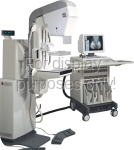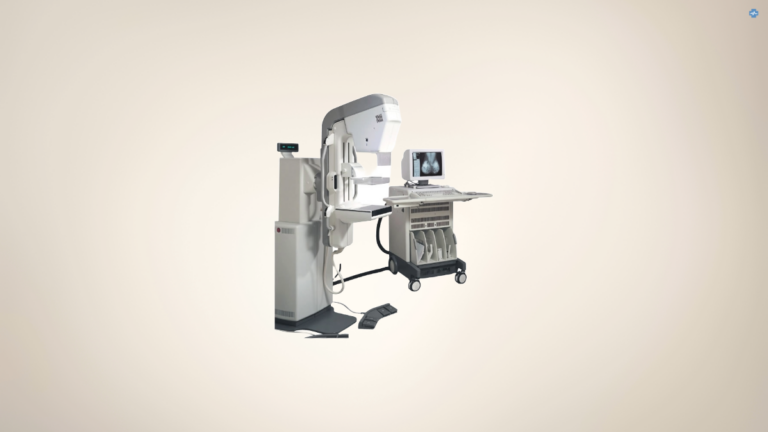The GE Senographe 2000D is a full-field digital mammography (FFDM) system. It was developed by GE Healthcare. It was introduced as one of the first digital mammography systems in the early 2000s. The Senographe 2000D marked a significant advancement in breast imaging technology. It was offering high-resolution digital imaging for improved breast cancer detection and diagnosis. It was designed for both screening and diagnostic mammography. That was a clear advantage over traditional analog mammography systems due to its enhanced image quality and streamlined digital workflow.
Key Features
-
Full-Field Digital Imaging: The Senographe 2000D captures high-resolution digital images of the entire breast, which enables radiologists to detect small lesions, calcifications, and other abnormalities with greater clarity and accuracy. This digital capability also eliminates the need for film processing, speeding up the imaging process and reducing time spent on developing images.
-
Automatic Exposure Control (AEC): The system uses automatic exposure control to optimise radiation dose according to the patient’s breast density and composition, minimising radiation exposure while maintaining excellent image quality. This feature is particularly beneficial in reducing radiation doses during routine screenings.
-
High-Resolution Detector: Equipped with a high-resolution flat-panel digital detector, the Senographe 2000D produces detailed images with better contrast, allowing radiologists to see subtle tissue differences. This aids in identifying early signs of cancer, especially in dense breast tissue where traditional mammography can be less effective.
-
Image Processing and Archiving: The digital images produced by the Senographe 2000D can be processed and archived in digital form, making it easy for radiologists to store, retrieve, and share images as needed. This also enables more efficient integration with PACS (Picture Archiving and Communication System) for seamless workflow in clinical settings.
-
Magnification and Spot Imaging: The Senographe 2000D includes options for magnification and spot imaging, allowing radiologists to closely examine suspicious areas with increased detail, which is essential in diagnostic follow-ups.
-
Enhanced Workflow: The digital nature of the Senographe 2000D eliminates the time required for film development, making it more efficient for both patients and healthcare providers. Digital mammography also allows radiologists to adjust image contrast and brightness to aid interpretation.
Benefits
- Improved Diagnostic Accuracy: The high-resolution digital images enable earlier and more accurate detection of abnormalities, particularly in women with dense breast tissue.
- Lower Radiation Dose: AEC and dose control features ensure that patients are exposed to the lowest effective radiation dose.
- Efficient Workflow: Faster imaging and processing times reduce patient wait times and streamline the radiologist’s workflow.
- Digital Image Storage: Digital archiving makes it easier to store, retrieve, and share images, facilitating better long-term patient care and comparison with past imaging.
Application
The GE Senographe 2000D is suitable for:
- Breast Cancer Screening: Its high-resolution digital imaging makes it highly effective in screening programmes.
- Diagnostic Mammography: Magnification and spot imaging capabilities allow for detailed follow-up on suspicious findings.
- High-Risk Patient Monitoring: The improved sensitivity of digital imaging is particularly beneficial for patients at high risk of breast cancer, such as those with dense breast tissue or a family history of breast cancer.
Spec
Brand: GE
Model: Senographe 2000D
Year of Manufacture: 2008
Accessories: Acquisitio Computer Sun Ultra 10; 21″ Monitor; Complete Set of Compression Paddles; One Generator / Conditioner Cabinet; One Small Control Console; One AWS Station with Monitor



